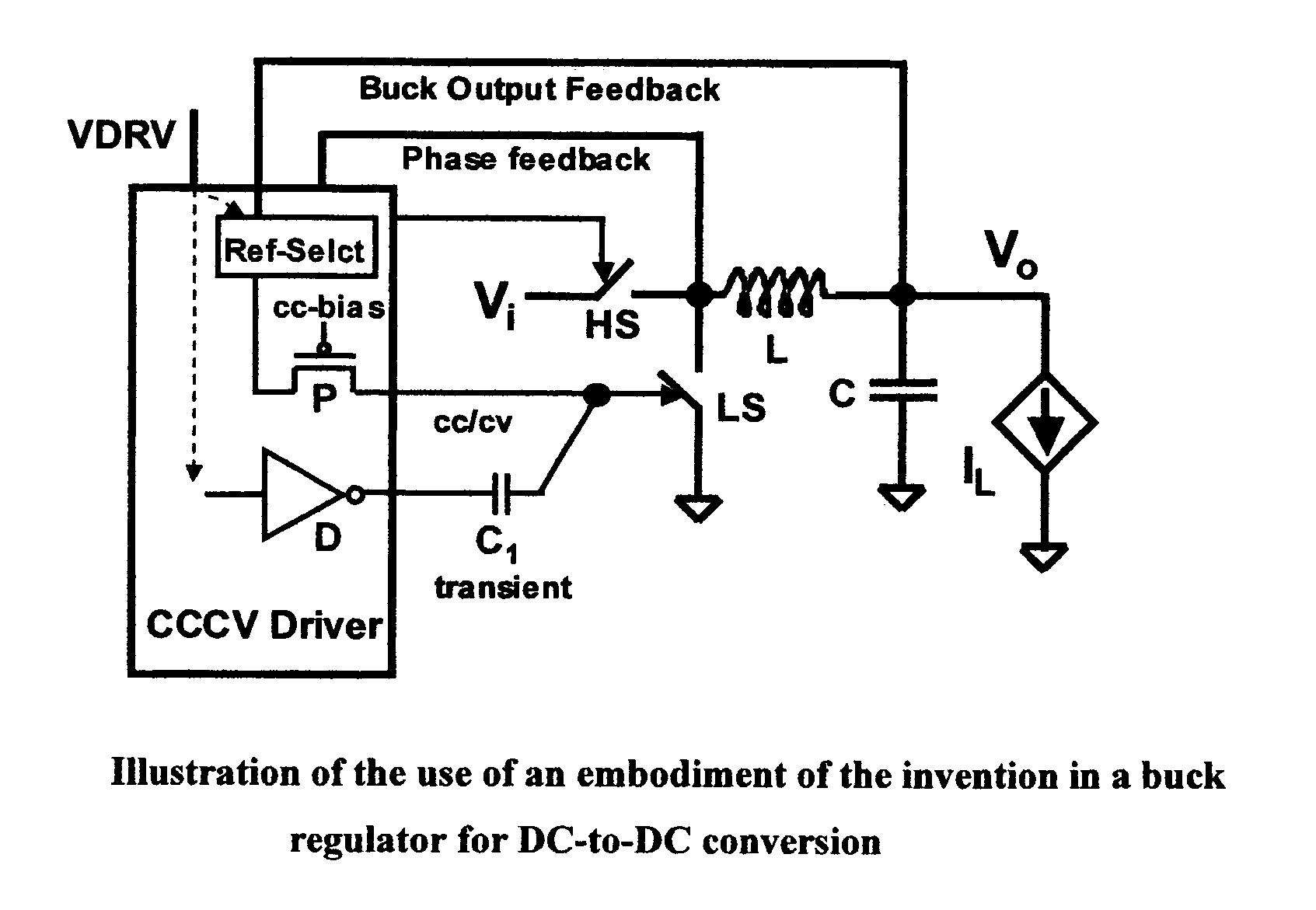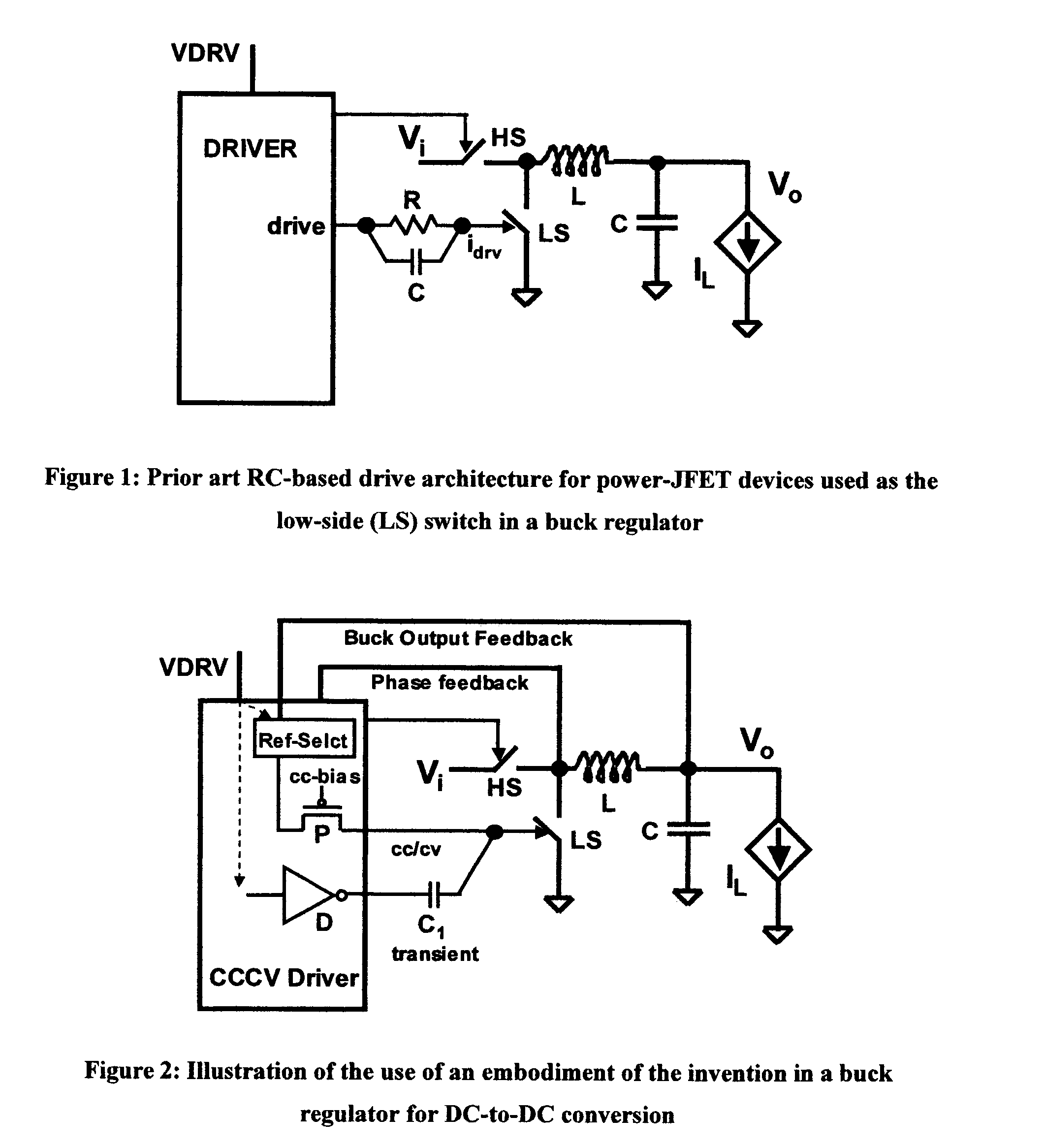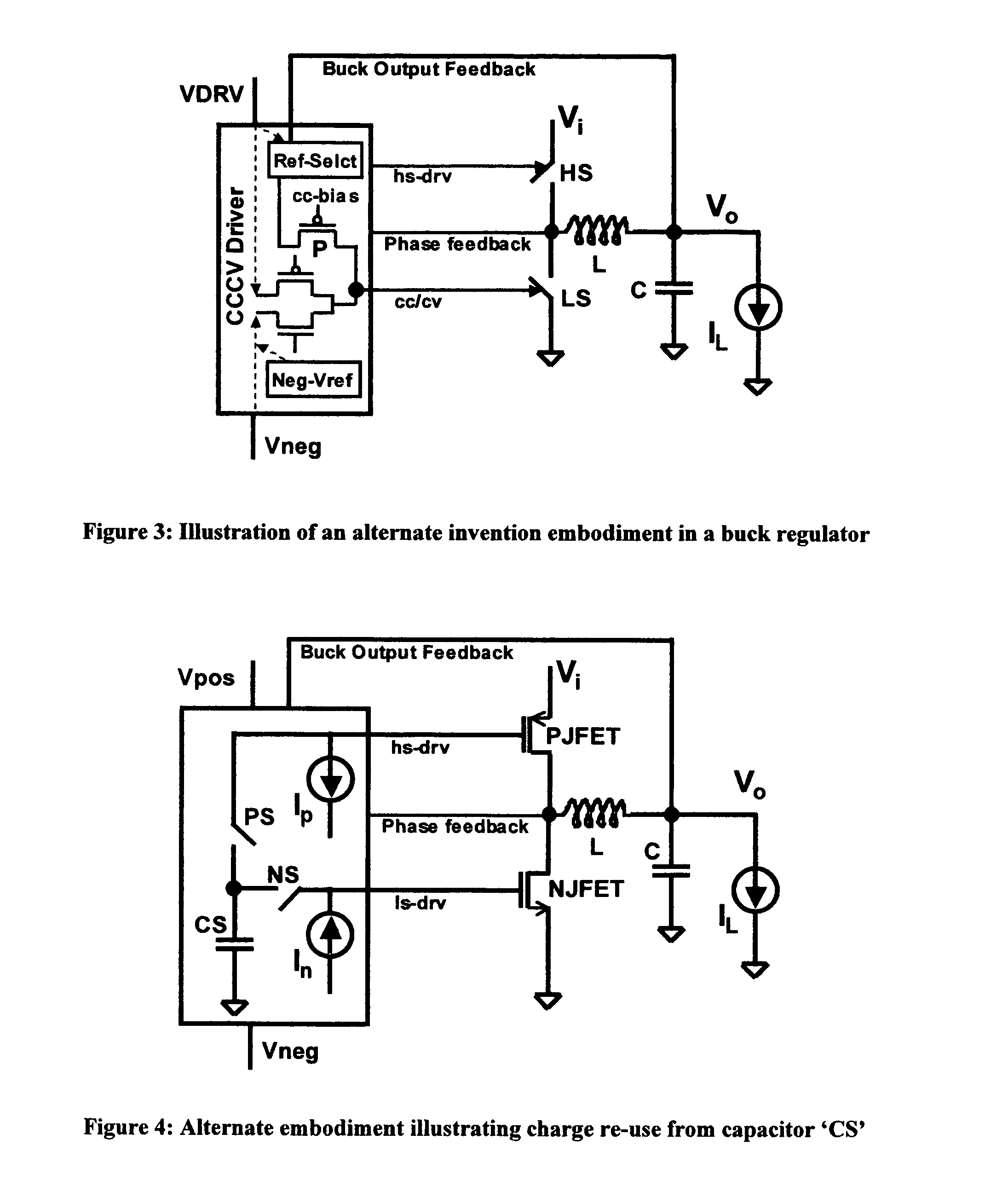Method and apparatus for driving low input impedance power transistor switches
a technology of low input impedance and power transistor, applied in the field of electronic circuitry, can solve the problems of additional energy expense, undesirable circuit characteristics, unwanted energy expenditure, etc., and achieve the effects of facilitating variation in drive current, reducing additional energy expense, and improving switch and system performan
- Summary
- Abstract
- Description
- Claims
- Application Information
AI Technical Summary
Benefits of technology
Problems solved by technology
Method used
Image
Examples
Embodiment Construction
[0018]For purposes of illustration, unless explicitly specified, the description herein will assume that N-type JFET power switches are used, where the channel is formed by electron-donor or n-type semiconductor material and the gate junction is formed by the deposition of p-type material.
[0019]FIG. 1 illustrates prior art drive architecture for the low-side (LS) JFET power switch of a buck converter. A resistor R is employed in series between the output of the driver circuits at node drive and the control gate input of the switch labeled LS. The resistance value of R and the driver power supply value VDRV determine the amount of forward current flowing into the JFET power switch in order to turn it on. One skilled in the art can appreciate that the current flowing into the gate input of the switch is substantially dependent upon the value of the driver power supply, the accuracy and the temperature characteristics of the external resistor as well as the nature of the PN junction of...
PUM
 Login to View More
Login to View More Abstract
Description
Claims
Application Information
 Login to View More
Login to View More - R&D
- Intellectual Property
- Life Sciences
- Materials
- Tech Scout
- Unparalleled Data Quality
- Higher Quality Content
- 60% Fewer Hallucinations
Browse by: Latest US Patents, China's latest patents, Technical Efficacy Thesaurus, Application Domain, Technology Topic, Popular Technical Reports.
© 2025 PatSnap. All rights reserved.Legal|Privacy policy|Modern Slavery Act Transparency Statement|Sitemap|About US| Contact US: help@patsnap.com



